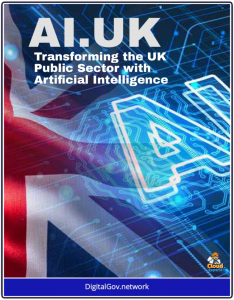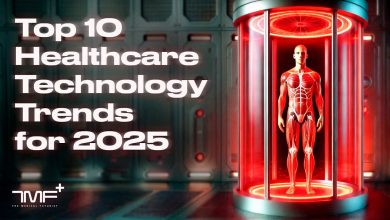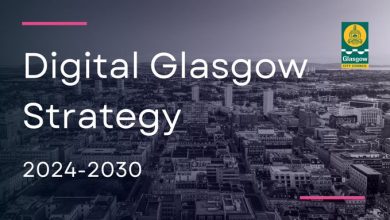NVIDIA Powers UK Sovereign AI Revolution with £1bn Compute Push and Stargate Supercluster
NVIDIA provides the technologies to power the “AI factories” needed to process vast datasets and train models at scale.
 Sovereign AI refers to a nation’s ability to develop, train, and deploy artificial intelligence models using its own infrastructure, data, workforce, and governance frameworks.
Sovereign AI refers to a nation’s ability to develop, train, and deploy artificial intelligence models using its own infrastructure, data, workforce, and governance frameworks.
This ensures control over data privacy, cultural alignment, national security, and economic independence, preventing reliance on foreign tech giants.
For the UK, achieving sovereign AI is central to Prime Minister Keir Starmer’s vision of becoming an “AI maker, not an AI taker,” as outlined in the government’s AI Opportunities Action Plan and the establishment of the Sovereign AI Unit within the Department for Science, Innovation and Technology (DSIT) in July 2025.
This unit focuses on unlocking economic growth (projected at up to £300 billion by 2030 from AI alone) and enhancing national security through domestic AI capabilities.
Key NVIDIA Technologies for UK Sovereign AI
NVIDIA, as the global leader in accelerated computing, plays a pivotal role here. Its technologies—such as Grace Blackwell GPUs, DGX systems, and AI Enterprise software—provide the “AI factories” needed to process vast datasets and train models at scale. Recent collaborations, including a June 2025 Memorandum of Understanding (MoU) with DSIT and a £1 billion government investment in compute power, position NVIDIA as a key enabler.
By leveraging these, UK government agencies can build resilient AI infrastructure to power next-generation digital services, from predictive healthcare to autonomous public transport, fostering innovation and economic multipliers like job creation (up to 1 million AI-related roles by 2030) and productivity gains.
NVIDIA’s portfolio is tailored for sovereign deployments, emphasizing secure, scalable, and energy-efficient AI. Here’s a breakdown of core technologies relevant to government use:
- Grace Blackwell Superchips: High-performance GPUs combining CPU and GPU for trillion-parameter model training, with 30x faster inference than predecessors. Powers national supercomputers like Isambard-AI (Bristol) and Dawn (Cambridge), enabling secure, on-shore training of UK-specific LLMs (e.g., UK-LLM project with UCL).
- DGX Systems & AI Factories: Turnkey clusters for building “AI factories” that ingest data and output intelligence, integrated with sovereign clouds. Supports Stargate UK (with OpenAI and Nscale), deploying up to 50,000 GPUs for public services like NHS diagnostics, ensuring data stays within UK borders.
- NVIDIA AI Enterprise: End-to-end software suite for model development, deployment, and optimization, including NeMo for custom LLMs. Enables agencies like the FCA to experiment in AI sandboxes, accelerating fraud detection while complying with GDPR and UK AI Safety Institute standards.
- NIM Microservices: Optimized inference engines for edge-to-cloud AI, with built-in security for regulated environments. Facilitates 6G research via the AI Aerial platform, partnering with UK universities for sovereign telecom AI (e.g., anomaly detection in national networks).
- Earth-2 & Omniverse: Digital twin platforms for simulation and visualization, powered by NVIDIA GPUs. Used by the Environment Agency for climate modeling, integrating UK-specific data to predict floods and support net-zero goals.
Utilization by UK Government Agencies
UK agencies can integrate NVIDIA tech across sectors to create sovereign AI ecosystems. The Sovereign AI Unit coordinates this, with DSIT leading infrastructure and UK Research and Innovation (UKRI) handling R&D. Below are targeted applications:
1. Healthcare (NHS and UK Health Security Agency) Application:
Deploy NVIDIA-powered multimodal AI (e.g., Nightingale project) for sovereign health data analysis, training models on anonymized UK patient records to predict outbreaks or personalize treatments. Use DGX clusters in secure NHS clouds to process PET scans 100x faster, reducing diagnostic wait times from weeks to hours. This builds on the MoU’s upskilling for 100,000 NHS staff in AI.
2. Public Services and Welfare (Department for Work and Pensions – DWP) Application:
AI-driven chatbots and predictive analytics via NIM for fraud detection and personalized job matching, using UK labor data. Integrate with the government’s AI Research Resource (AIRR), expanding 20-fold by 2030, to simulate welfare scenarios and optimize benefits distribution.
3. National Security and Defense (Ministry of Defence – MoD and GCHQ) Application:
Sovereign edge AI for cybersecurity and autonomous systems, leveraging NVIDIA’s Aerial for 6G-secured networks. Partner with BAE Systems (via UK Sovereign AI Industry Forum) to deploy DGX Spark in NATO-aligned projects, simulating threats with UK-specific intelligence data.
4. Transport and Infrastructure (Department for Transport – DfT) Application:
Omniverse-based digital twins for smart cities, optimizing traffic and rail with real-time AI. Use Earth-2 at the University of Manchester for pollution-flow models, integrated into national transport AI via Isambard-AI supercomputer.
5. Financial Regulation (Financial Conduct Authority – FCA) Application:
AI sandbox with NVIDIA tech for stress-testing models on UK market data. Experiment with agentic AI for real-time compliance monitoring, as piloted in the October 2025 framework.
Cross-agency enablers include the NVIDIA AI Technology Center (launched June 2025), training 50,000 developers annually via Deep Learning Institute, and AI Growth Zones in Scotland/Wales for decentralized compute.
Economic Growth Benefits and Path to World Leadership
By harnessing NVIDIA for sovereign AI, the UK can drive transformative growth:
- Productivity Surge: AI could add £200-£350 billion to GDP by 2035 (per government estimates), with NVIDIA infrastructure enabling 40% faster model training to outpace competitors.
- Job Creation and Skills: The MoU targets reskilling 1 million workers, creating high-value roles in AI engineering and data science, reducing inequality through nationwide pipelines.
- Investment Magnet: £42 billion in US-UK deals (e.g., Microsoft, Google) since 2025, plus NVIDIA’s £2 billion commitment, could triple AI startups (from 2,000 to 6,000 by 2030).
- Sectoral Multipliers: Healthcare AI saves £10 billion annually in NHS costs; finance boosts City of London exports by 25%; manufacturing (e.g., via BT’s agentic AI) enhances competitiveness.
To lead globally, the UK must prioritize: (1) Rapid data center approvals (as pledged by Starmer); (2) Ethical AI governance via the AI Safety Institute; (3) International alliances like the US-UK Tech Prosperity Deal. Challenges like energy demands (addressed via sustainable NVIDIA designs) and talent gaps are mitigated through forums like the Sovereign AI Industry Forum, uniting BAE Systems, BT, and Barclays.
In summary, NVIDIA’s technologies empower UK agencies to forge a sovereign AI backbone, igniting a digital services renaissance—from predictive policing to climate-resilient infrastructure—that cements the UK’s status as an AI superpower, fueling sustainable, inclusive growth for decades.




